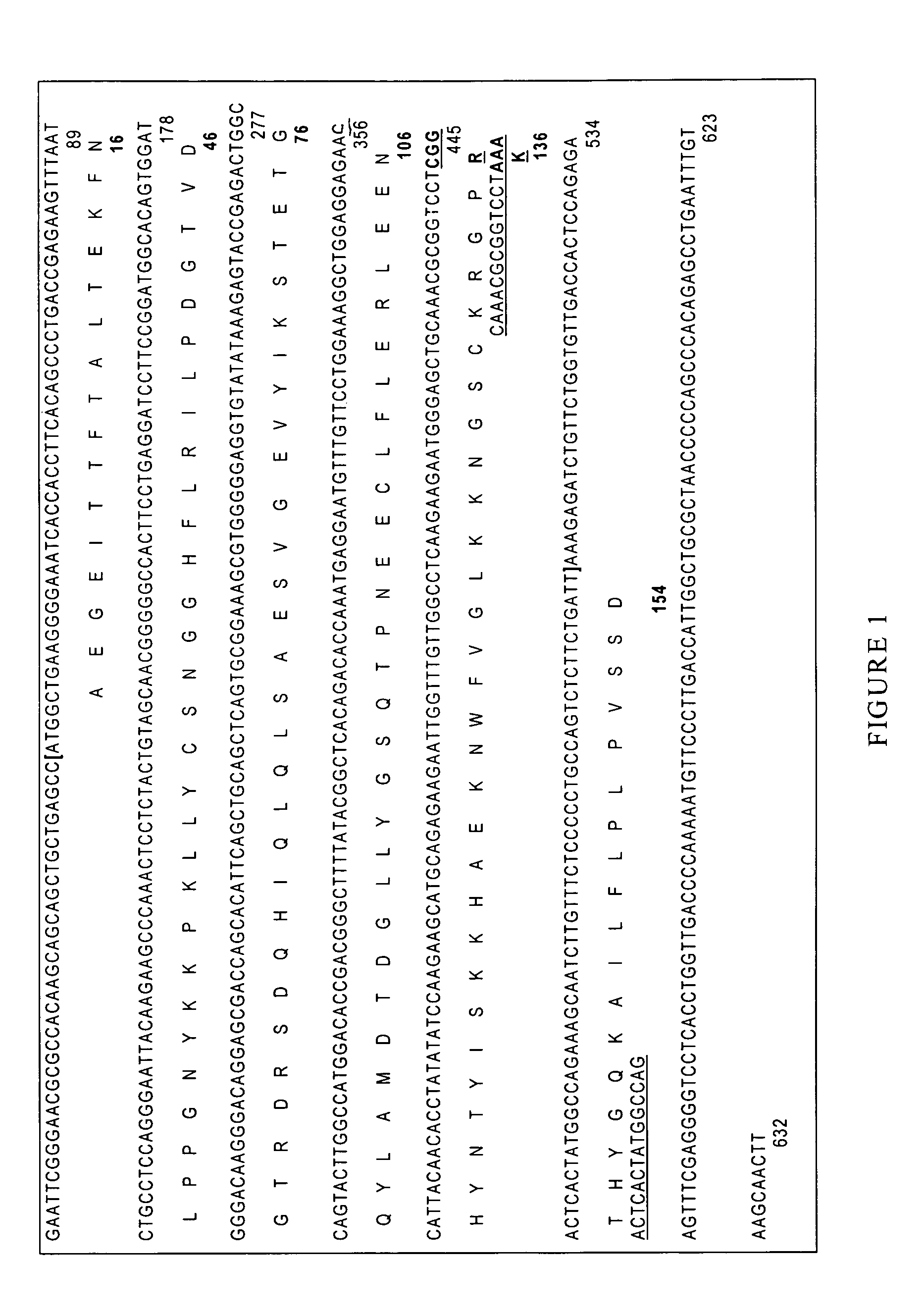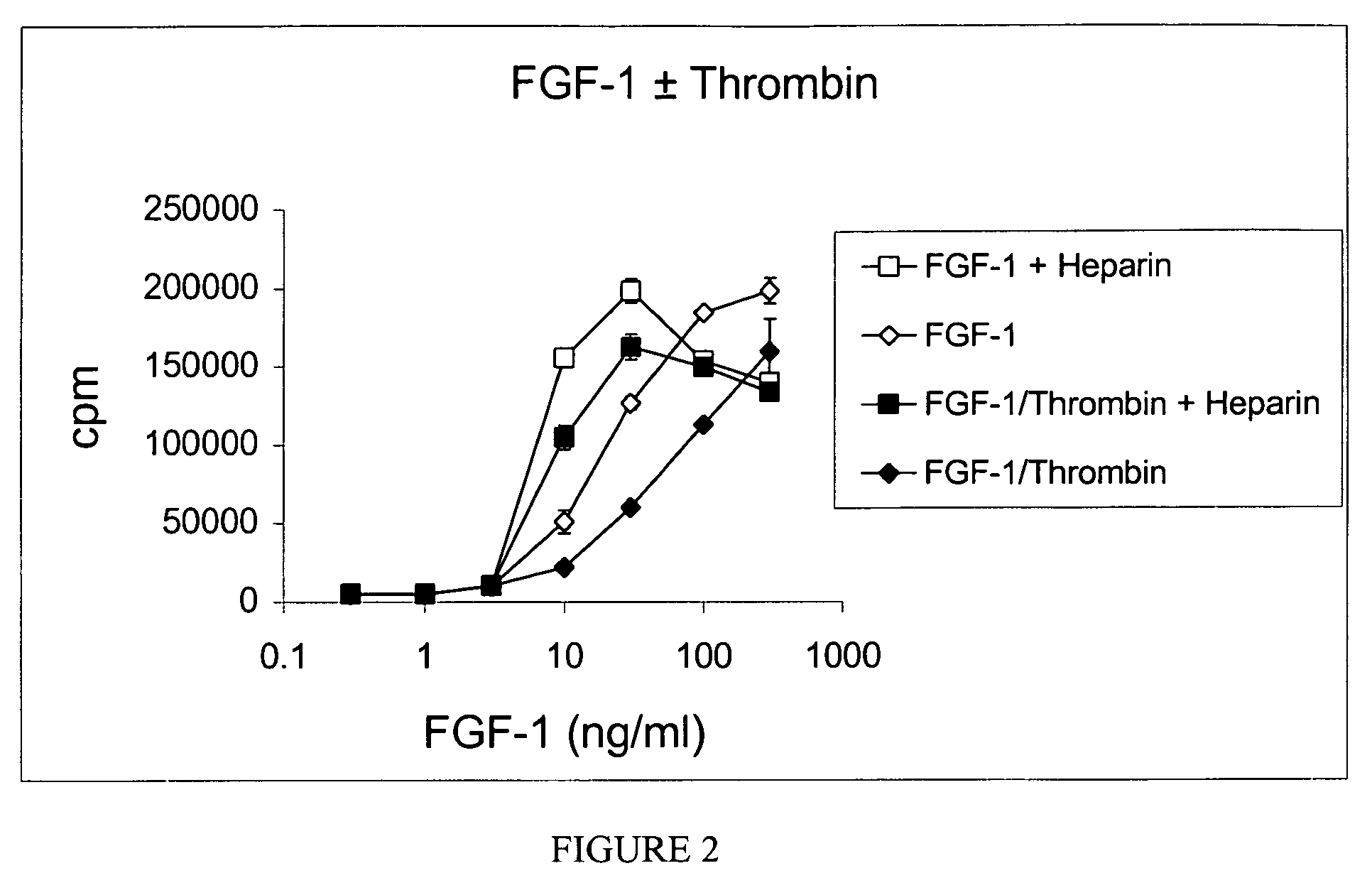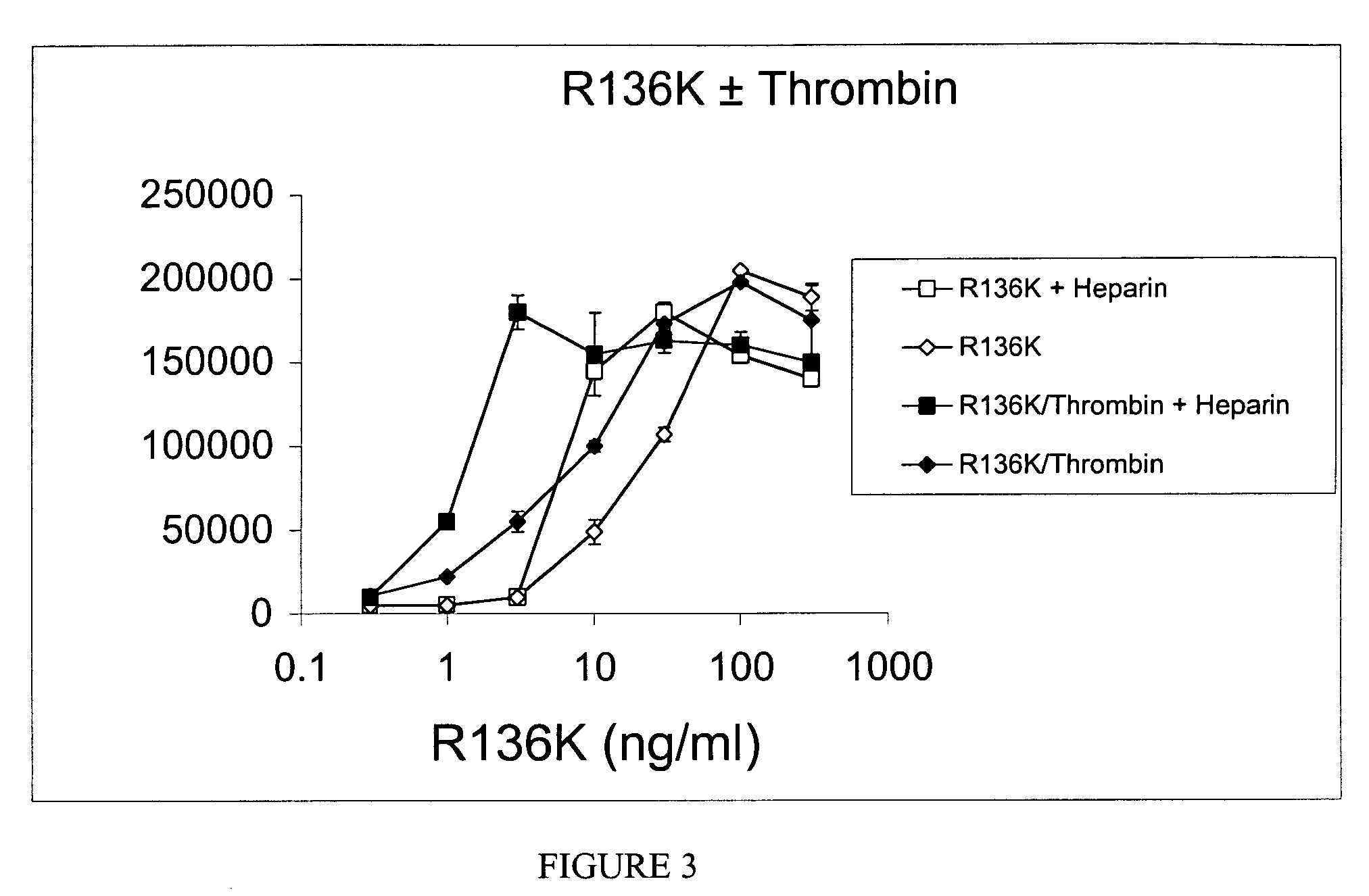Compositions, methods and kits relating to thrombin degradation resistant fibroblast growth factor-1
a technology thrombin degradation, which is applied in the field of fibroblast growth factor, can solve the problems of not being optimized for fgf-1 delivery, not considering the protection of thrombin degradation, and not being particularly successful in the study of fgf-1 administered by intravenous and intracoronary techniques to induce angiogenesis in an injured hear
- Summary
- Abstract
- Description
- Claims
- Application Information
AI Technical Summary
Benefits of technology
Problems solved by technology
Method used
Image
Examples
examples
[0295]Using site directed mutagenesis, a mutant thrombin-resistant FGF-1 was produced wherein an amino acid in a recombinant human wild-type / native FGF-1 protein sequence (SEQ ID NO: 1) was changed, specifically the arginine at position 136 was changed to lysine (FIG. 1). The resulting mutant protein, FGF-1R136K (SEQ ID NO:2), retained the biological activity of wild-type FGF-1 but was much less susceptible to thrombin cleavage. The thrombin-resistant FGF-1R136K mutant is an ideal candidate for therapeutic use of FGF-1, which is otherwise degraded by thrombin.
[0296]The Materials and Methods used in the present study are now described.
FGF-1R136K Mutant FGF-1 Construction and Purification
[0297]To produce the thrombin-resistant FGF-1 mutant, the full length (beta) form of wild type human FGF-1 was mutated. The full length FGF-1 DNA sequence encodes for a 154 amino acid form of the FGF-1 protein (FIG. 1). The recombinant FGF-1 gene was obtained from Fisheroligo (Fisher Scientific, Pitts...
PUM
| Property | Measurement | Unit |
|---|---|---|
| Electrical resistance | aaaaa | aaaaa |
| Frequency | aaaaa | aaaaa |
| Degradation properties | aaaaa | aaaaa |
Abstract
Description
Claims
Application Information
 Login to View More
Login to View More - R&D
- Intellectual Property
- Life Sciences
- Materials
- Tech Scout
- Unparalleled Data Quality
- Higher Quality Content
- 60% Fewer Hallucinations
Browse by: Latest US Patents, China's latest patents, Technical Efficacy Thesaurus, Application Domain, Technology Topic, Popular Technical Reports.
© 2025 PatSnap. All rights reserved.Legal|Privacy policy|Modern Slavery Act Transparency Statement|Sitemap|About US| Contact US: help@patsnap.com



